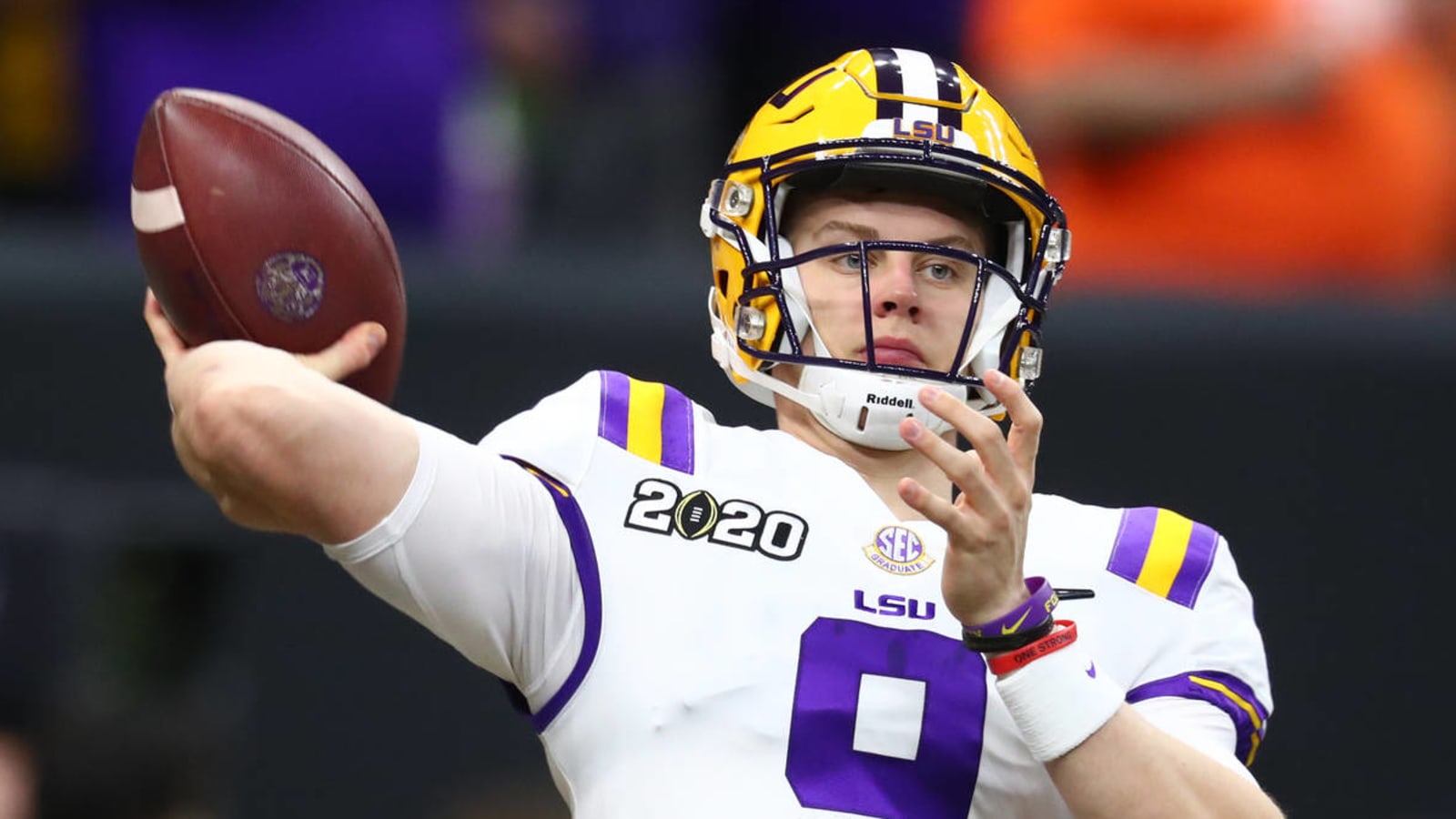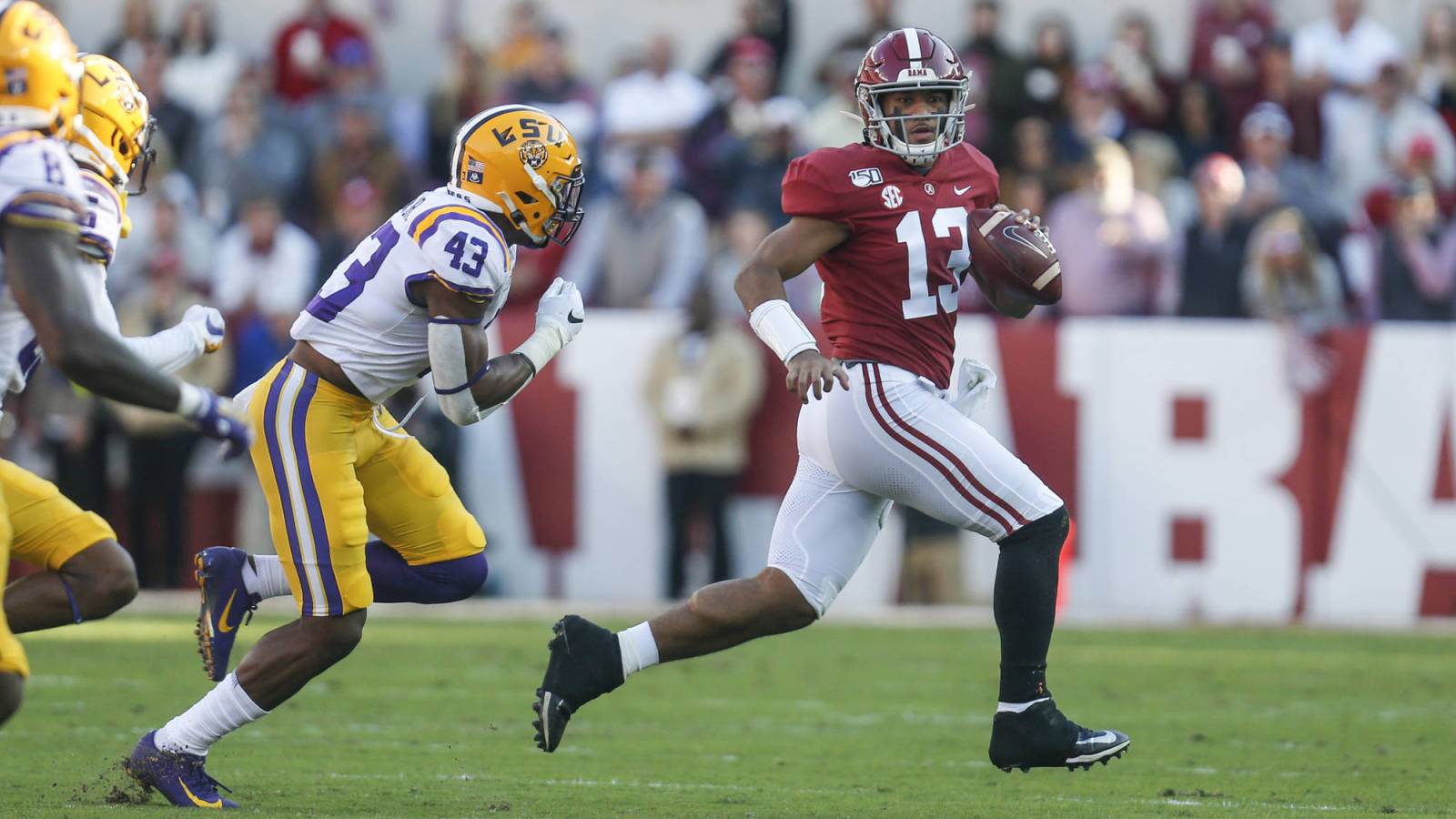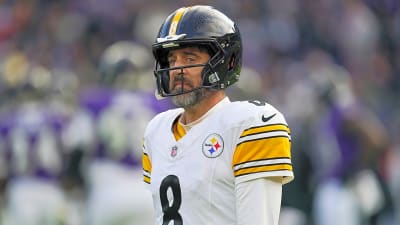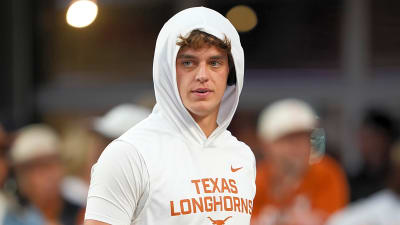
Trade it, pick Tua or select Mr. Obvious? Advice for Bengals on No. 1 pick
As we approach this week's Combine in Indianapolis, Yardbarker NFL writers Michael Nania, Chris Mueller and Sam Robinson weigh in on one of the biggest topics of the offseason: what the Bengals should do with the first overall pick.
Consider trade for draft haul
MICHAEL NANIA: In a recent interview, Burrow was non-committal when asked about his desire to play for the Bengals, stating, “They have their process that they have to go through, and so I am blessed to be in the position I’m in. If they select me, they select me. I’m going to do everything in my power to be the best football player I can be.”
Hmm ... that doesn't sound very encouraging for Cincinnati, does it?
We are a long way from the point where Burrow may force his hand on the Bengals, but until then, it is worth speculating what Cincinnati could squeeze from another franchise for the top pick.
The No. 1 overall selection is worth 3,000 points on the "trade value chart." Going by that valuation, the Bengals could swap places with the Dolphins at No. 5 while scooping up Miami's No. 18 (R1) and No. 56 (R2) picks. With the fifth pick, the Bengals would still have the opportunity to draft a franchise quarterback in Oregon's Justin Herbert and add offensive line and wide receiver help with the extra two picks.
Or the Bengals could swap with the Jaguars at No. 9, tacking on Jacksonville's No. 20 (R1), No. 42 (R2), and No. 73 (R3) picks. With that haul, Cincinnati would have plenty of ammunition to inject life back into a talent-barren roster.
NFL front offices will go to great lengths to get their hands on a QB they believe in. In 2016, Tennessee had the top pick. Not in need of a quarterback, the Titans pulled in a haul from a team that was desperate for one. The Titans dealt their first-, fourth- and sixth-round selections (No. 1, No. 113 and No. 117) to the Rams for Los Angeles' first-, two second- and third-round selections in the 2016 Draft (Nos. 15, 43, 45 and 76) as well as L.A.'s first- and third-round selections the next year. The Rams picked QB Jared Goff, who was not nearly as highly touted as Burrow.

Forget Burrow, pick Tagovailoa
CHRIS MUELLER: The thought of the Bengals passing on Burrow, whether he wants to play for them or not, seems far-fetched. Mike Brown is arguably the most stubborn owner in the NFL, and as Cincinnati’s de facto general manager, the decision about what to do with the first overall pick will be his and his alone. If he thinks Burrow is the best choice, he’ll draft him.
But what if Burrow isn’t really the best choice? If Brown is willing to make a calculated risk, he can have the QB with the highest ceiling in this year’s draft: Alabama’s Tua Tagovailoa.
Perhaps a product of passing game coordinator Joe Brady’s influence, Burrow’s 2019 was the best passing season in college football history (60 TD passes, six interceptions). Burrow was pedestrian in 13 starts in 2018, throwing only 16 touchdowns. That kind of a year-to-year spike is curious at the very least, and if you choose to be cynical, might be suspicious.
Burrow checks many boxes; his arm strength isn’t spectacular, but it is plenty good enough, and he’s extremely accurate (76.3 % completion percentage last season). He’s tough, has proven himself as a great leader, and is a solid athlete.
Tagovailoa, on the other hand, had two seasons of prime production at Alabama, completing 69 percent of his passes in 2018 and 71.4 percent last season. He excelled under three different offensive coordinators.
There’s nothing Burrow has that Tagovailoa doesn’t, save a few inches of height (6-4 vs. 6-1). Tagovailoa’s arm is better, and he’s more athletic. He’s already plenty comfortable with enormous expectations.
Tagovailoa’s health is the only hang-up, and it’s a potentially major one. His hip injury -– one usually seen in car accidents -- was severe and uncommon, and threw into doubt whether he would even declare for the 2020 Draft. He has also had surgery on both ankles and his left index finger. Tagovailoa is a natural playmaker, but scrambling and making things happen on the run in the NFL comes with an added element of risk. But there’s no reason to believe that his hip injury will put him at greater risk for a repeat fracture in the future; so as long as his recovery proceeds on schedule, it should be all systems go.
Burrow may well turn out to be an excellent NFL quarterback, but he was probably a third- or fourth-round pick before his spectacular 2019. Tagovailoa has always been great, and if the Bengals want to pick the highest-ceiling quarterback, they should take him with the top pick.
Don't overthink this, Bengals: Select Burrow
SAM ROBINSON: The murmurs of Burrow’s hesitance about being drafted by the Bengals have seemingly reawakened the football world to how unsuccessful this generally boring franchise has been for a generation. No team has gone longer without winning a playoff game. The Bengals’ last postseason triumph came over the Houston Oilers -– a week before losing to a Los Angeles Raiders team that still featured Bo Jackson.
Since that January 1991 afternoon, the Bengals are 0-8 in postseason play. Former QB Carson Palmer’s accusations of the Mike Brown-owned organization operating with a lack of urgency to pursue Super Bowls are not off base. The Bengals –- a GM-less, draft-and-develop team that rarely uses free agency for major roster upgrades -– cannot be strong-armed when they hold the No. 1 overall pick for the first time in 17 years.
Trading out of the Burrow draft slot or selecting Ohio State defensive lineman Chase Young, when the Bengals have needed a higher-ceiling quarterback for years, would validate the negative stigma surrounding this organization. Rather than the alarmingly untalented Dolphins landing the top pick, as most expected, the Bengals backed into it. They arrived here despite 14 players with at least four years’ experience starting at least eight games last season.
That veteran team’s 2019 performance under unproven coach Zac Taylor creates concern, but that 2-14 season thrust Cincinnati into position to draft a quarterback who grew up in Ohio and just threw a Division I-FBS-record 60 touchdown passes en route to a Heisman Trophy and a national championship. Overthinking this is ill-advised.
Since 2016, the Bengals have let quality wideouts Marvin Jones and Mohamed Sanu, and high-end offensive linemen Andrew Whitworth and Kevin Zeitler, walk in free agency. In that time, the most notable outside free agent the Bengals signed that counted against the compensatory formula was probably mid-level linebacker Kevin Minter (for one year and $4.25 million) in 2017.
Despite the pleas Palmer made to Brown about improving the team 10 years ago, the Bengals did little to help Andy Dalton. The Bengals’ perpetual caution represents a key reason for their late-2010s descent.
Potential Burrow concerns are understandable. But selecting a potential franchise quarterback without trading major assets to do so is immensely valuable. The Rams, Eagles, Chiefs, Texans, Jets and Bills paid bounties for their current passers. Landing Burrow without sacrificing any draft capital will allow the draft-centric Bengals to use their other picks to (in theory) build a talented roster around him.
More must-reads:
- Report: Bengals have decided on drafting Joe Burrow barring Ricky Williams-type trade
- Report: Panthers will make a push to acquire No. 1 pick
- The 'Oldest 4,000-passing-yard seasons' quiz
Breaking News
Trending News
Customize Your Newsletter
 +
+
Get the latest news and rumors, customized to your favorite sports and teams. Emailed daily. Always free!








